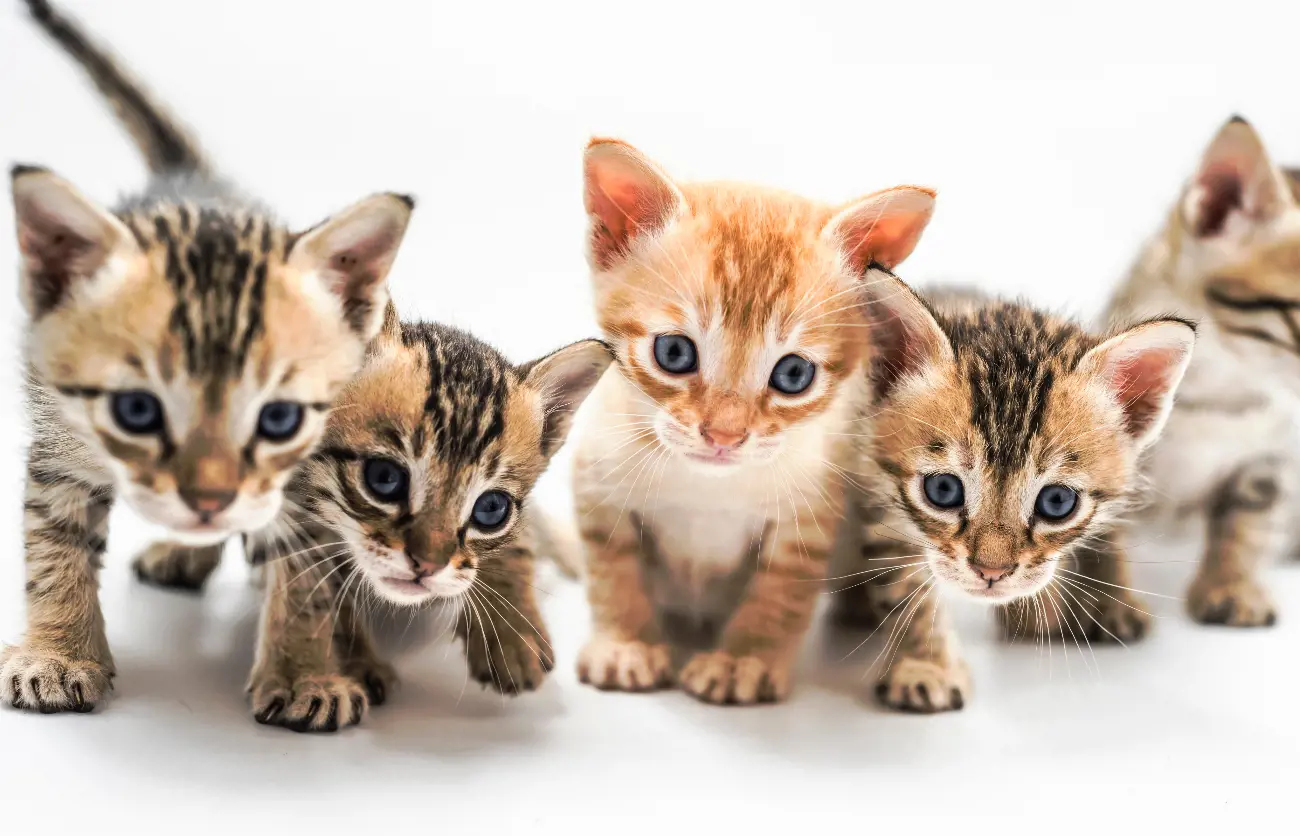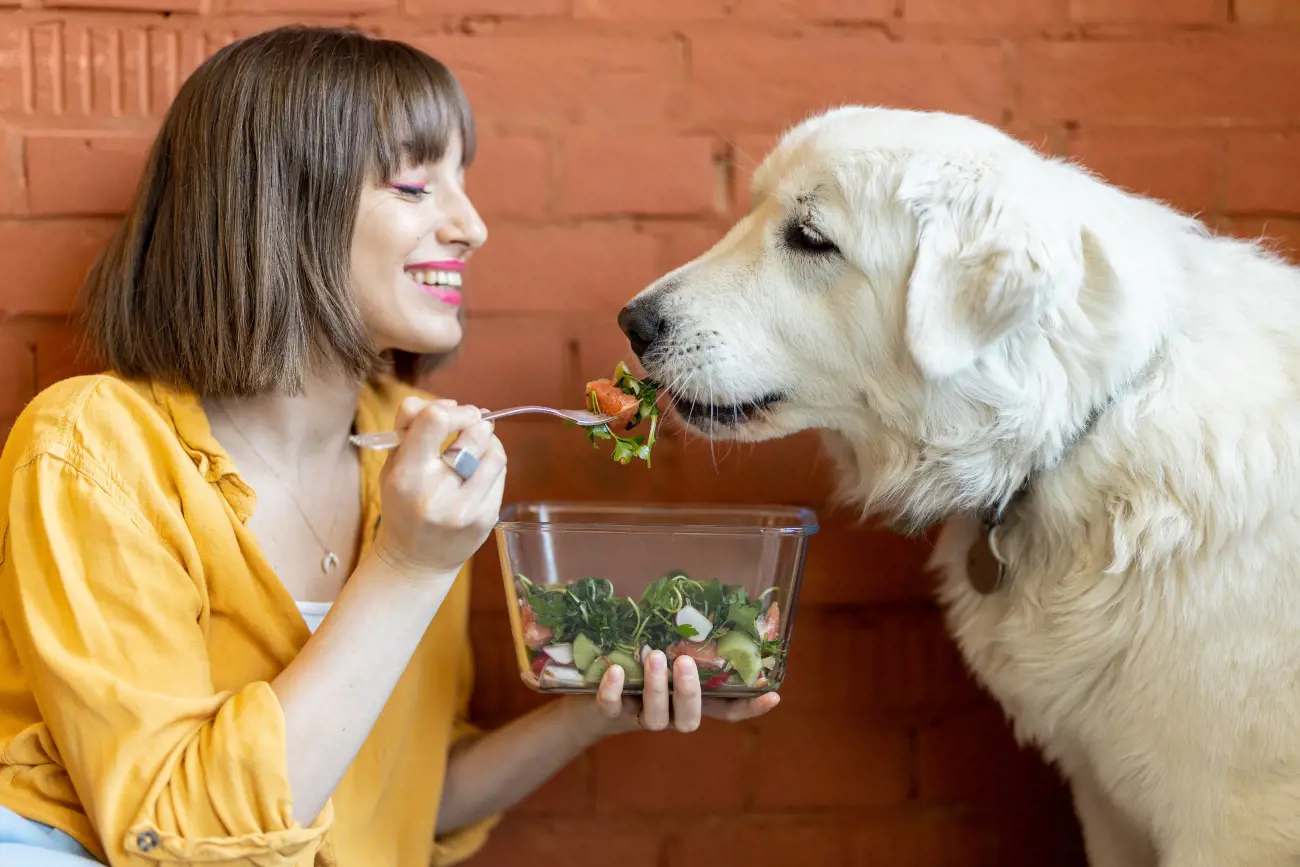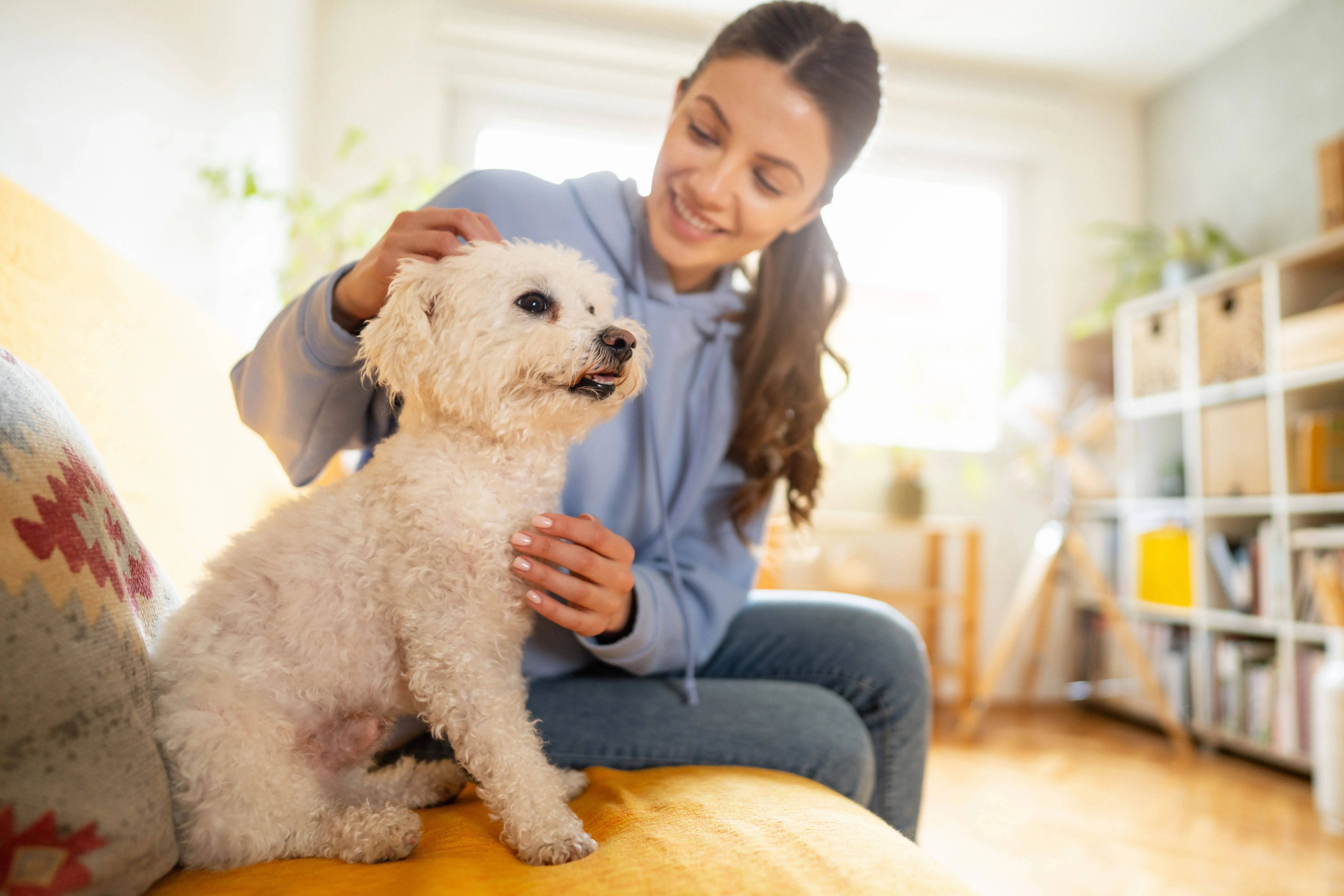Why do Pugs sleep so much?
10th April, 2024
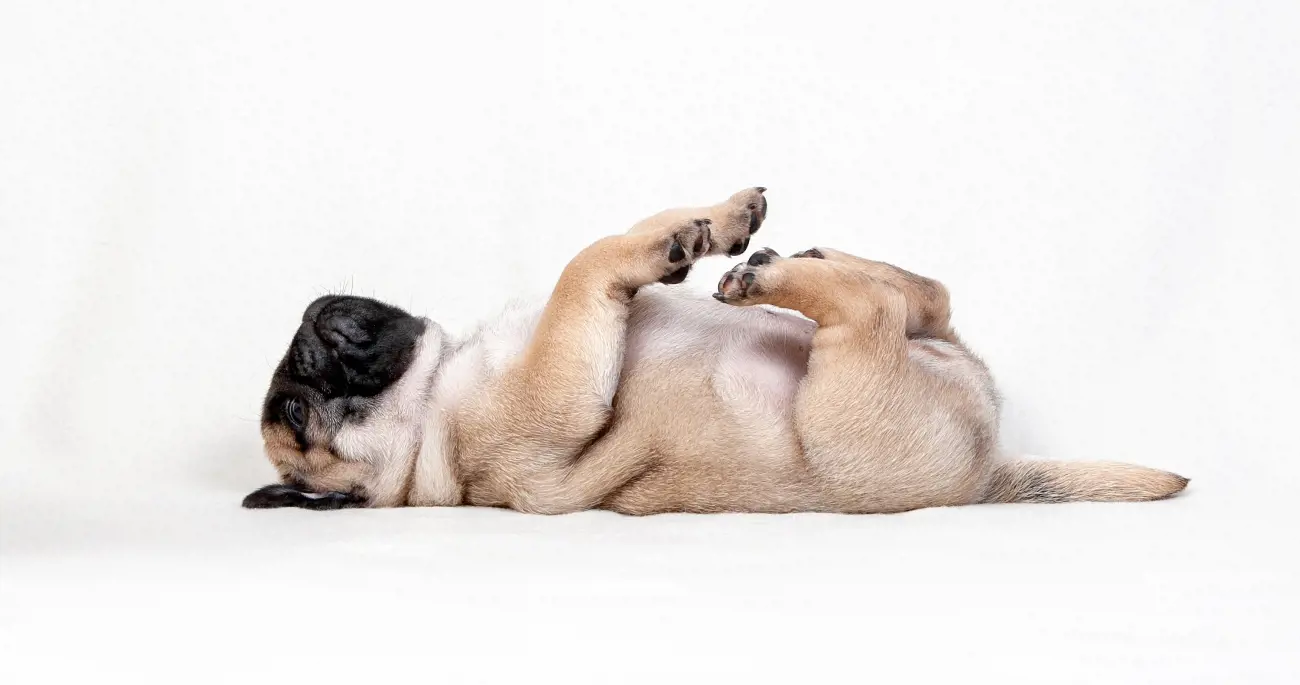
The Pug is a captivating breed, known for its charming personality and expressive, soulful eyes. This breed has the power to captivate hearts and bring laughter with its endearing antics. However, a common question that often puzzles pug owners is why do pugs sleep so much?
Basics of Pug sleeping habits
The Pug breed needs a good amount of sleep, and a Pug sleeps frequently through the day and night Its sleep pattern may seem excessive, or lazy, especially when compared to a human's, but it's quite usual for the canine world. In fact, the amount of sleep a Pug pup gets is deeply ingrained in their DNA.
The brachycephalic breed influence
Pugs belong to the 'brachycephalic' category of dog breeds, which refers to breeds with unique facial features, such as flat faces and shortened snouts. This distinct anatomy has a direct impact on their energy levels and consequently their sleep patterns. Brachycephalic breeds, including pugs, usually have a lower tolerance for physical activity, requiring more rest to recuperate.
Pug energy bursts
Although pugs are often seen snoozing, they can have moments of high energy. They can switch from being relaxed and asleep to becoming animated, showcasing an unexpected level of liveliness. Although these energy spurts are not prolonged, they are essential for their well-being, allowing them to use up some energy before they go back to their favourite pastime, sleeping.
Pug sleep schedule: A day in the life of a Pug
Understanding a pug's sleep schedule can provide the pug owner with a clearer insight into their love affair with sleep. While quantity is a factor, the quality of sleep also plays a crucial role.
The early bird routine
Pugs are often early risers. They usually wake up around sunrise, a time when they are most active and ready to explore their surroundings.
The post-breakfast siesta
After a fulfilling breakfast, pugs often head for bed for a post-meal nap. This nap can last a couple of hours, ensuring they are well-rested for the rest of the day.
The midday power nap
As the day progresses, pugs might take shorter, intermittent naps in between their playtime and snacks. These power naps help them recharge their batteries, ensuring they stay awake and energised for spontaneous play sessions.
The evening playtime
Early evening is when pugs are at their most active. They are ready for play sessions, chasing their favourite toys and engaging other dogs and the children in some entertaining antics.
The nighttime deep sleep
As the night falls, pugs often start winding down. Typically, their nighttime sleep is the longest and most restorative. Pugs usually sleep through the night, just like their human companions.
Dog insurance
Remember, keeping your dogs insured is crucial. To get a dog insurance quote for your beloved pet, you can get a quote through our website. If you would like to chat with one of our dog insurance team, you can get in touch with us on 0330 102 5748.
Now that you have a clearer understanding of why your pugs love to sleep so much, you can better cater to their needs and ensure they get the rest and exercise they need. After all, a well-rested pug is a happy pug.
Factors that influence Pug sleep
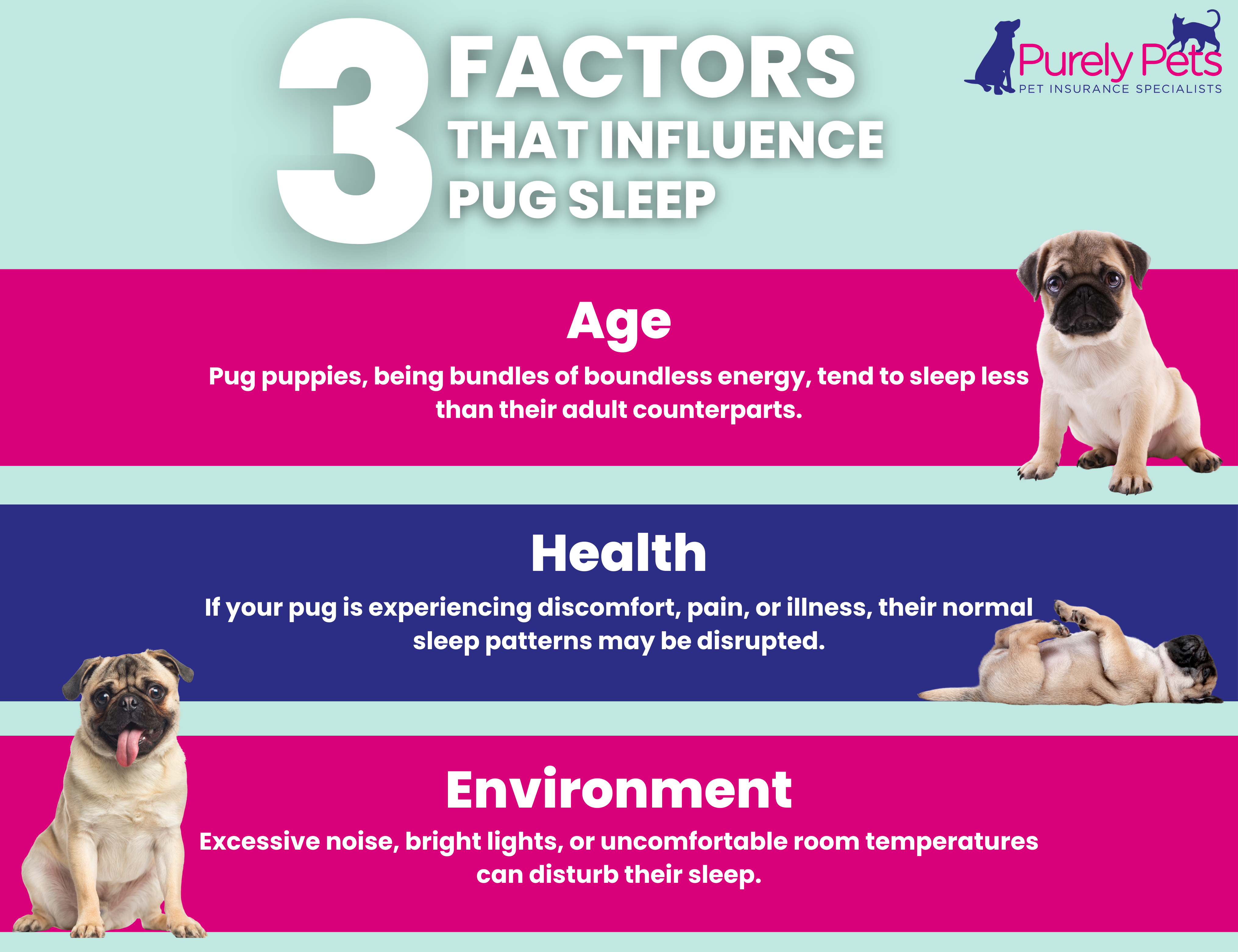
There are several factors that can influence a pug's sleep patterns. These include:
Age
A Pug puppy, being a bundle of boundless energy, tend to sleep less than their adult counterparts. As they mature, their sleep patterns become more consistent with the typical pug routine.
Health and comfort
A pug's physical well-being can also impact their sleep. If your pug is experiencing discomfort, pain, or illness, their normal sleep patterns may be disrupted.
Environment
The environment or house in which your pug lives can significantly impact their sleep. Excessive noise, bright lights, or uncomfortable room temperatures can disturb their slumber.
Pug dreamland: What happens when they sleep
Pugs, like other animals and humans, go through various sleep stages, including Rapid Eye Movement (REM) sleep. During REM sleep, pugs may twitch, move their paws, or even make small, adorable breathing noises. This is a sign that they are experiencing vivid dreams, just like we do.
The art of napping: Pug style
Pugs have truly mastered the art of napping. They can seamlessly transition from full-blown play mode to a tranquil snooze. It’s this balance that makes their sleeping habits so unique, fun and endearing.
Conclusion
In the world of pugs, sleep is not just a necessity; it’s an art form. Embrace your pug’s love for slumber, and you’ll have a loyal, well-rested companion who sleeps by your side, ready to share in life’s adventures.
Frequently asked questions
Is it normal for pugs to sleep all day?
Pugs are known to be a breed that loves their snooze time. They typically need around 14 hours of sleep a day, which can make it seem like they're sleeping all the time. This is especially true for puppies or older pugs who may require even more sleep. However, it's important to ensure they're getting adequate exercise and stimulation during their awake hours.
How often should you walk a pug?
The general recommendation is to walk them at least twice a day. Pugs are known for their energetic nature and love for exploration, so regular walks not only keep them in good physical shape but also provide mental stimulation.
Keep in mind, though, that pugs are susceptible to overheating and breathing difficulties due to their snub noses. Therefore, avoid strenuous walks or walks during peak heat hours. Instead, opt for leisurely strolls during cooler parts of the day.
Should pugs sleep in your bed?
For some, the comforting presence of their furry friend is a welcome addition to their nighttime routine. Pugs are known for their affectionate nature and they love to cuddle, making them perfect bed companions. However, it's essential to consider factors such as allergies, hygiene, and potential disruption to your sleep. If these aren't issues for you, then there's no reason why your pug can't share your bed.
What is the sleeping position of a Pug?
Just like humans, every Pug has their preferred sleeping pose. However, most of them love to curl up into a tiny ball, similar to the classic "donut" position. This adorable little furball will tuck its paws neatly under its body and wrap its tail around for a snuggly snooze.
This position is not only endearing to watch, but it also helps retain their body heat.
Helpful Pages
Recent Posts
Pet Insurance Quote
- 98% claims paid *
- Claims paid directly to vets
- 24/7 vet video consultations
- Interest free monthly payments
